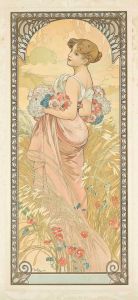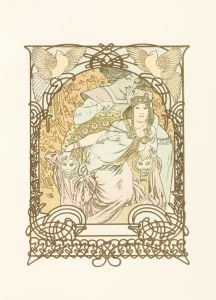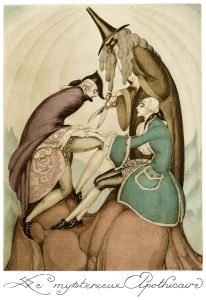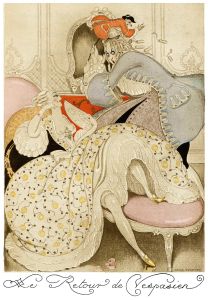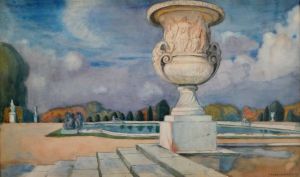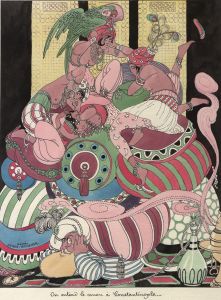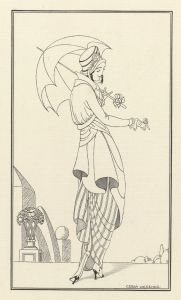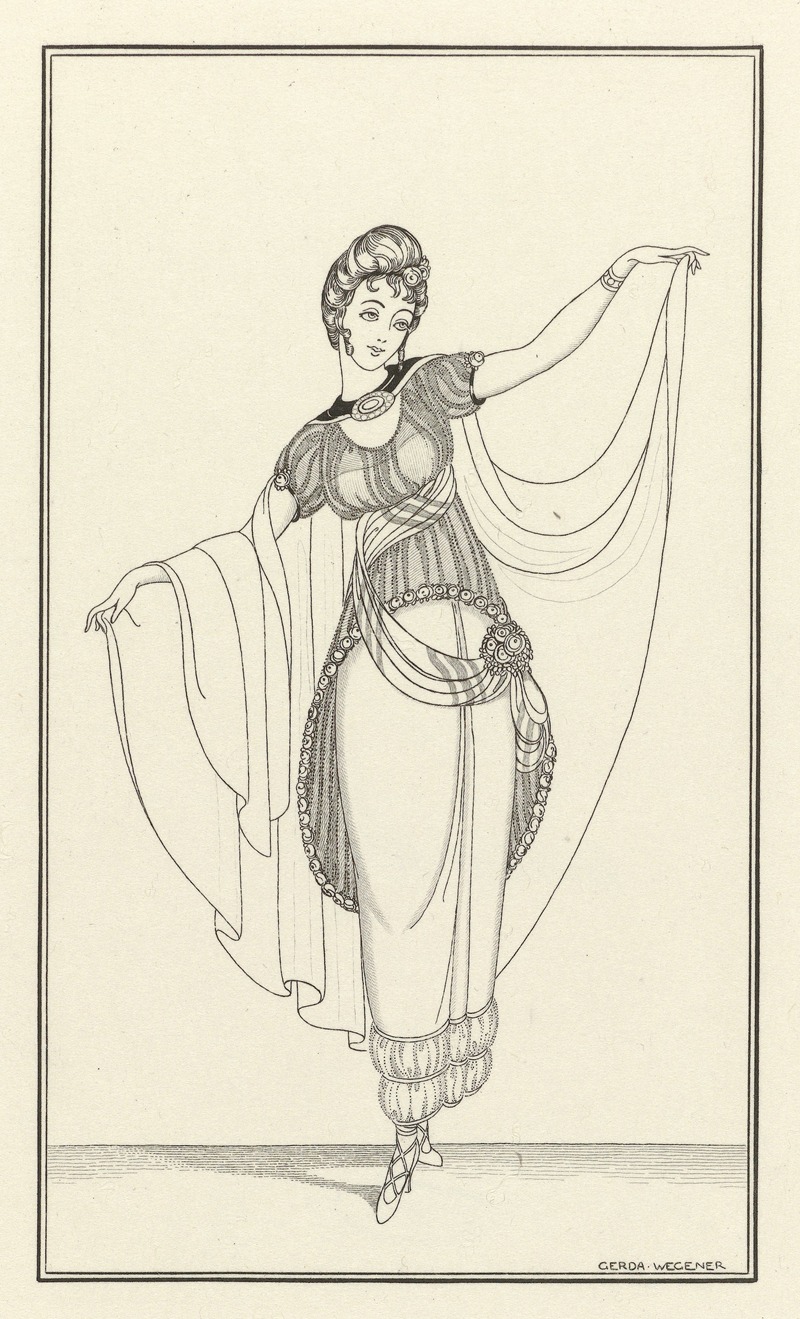
Journal des Dames et des Modes, Costumes Parisiens, 1914, No. 165
A hand-painted replica of Gerda Wegener’s masterpiece Journal des Dames et des Modes, Costumes Parisiens, 1914, No. 165, meticulously crafted by professional artists to capture the true essence of the original. Each piece is created with museum-quality canvas and rare mineral pigments, carefully painted by experienced artists with delicate brushstrokes and rich, layered colors to perfectly recreate the texture of the original artwork. Unlike machine-printed reproductions, this hand-painted version brings the painting to life, infused with the artist’s emotions and skill in every stroke. Whether for personal collection or home decoration, it instantly elevates the artistic atmosphere of any space.
Gerda Wegener was a Danish illustrator and painter, known for her contributions to fashion illustration and her vibrant, often provocative, depictions of women. One of her notable works is the illustration for "Journal des Dames et des Modes, Costumes Parisiens, 1914, No. 165." This piece is part of a series of fashion plates that Wegener created for the French fashion magazine "Journal des Dames et des Modes," which was published from 1912 to 1914.
The "Journal des Dames et des Modes" was a prestigious publication that featured the latest in Parisian fashion, art, and culture. It was known for its high-quality illustrations, which were often created by prominent artists of the time. The magazine served as a significant platform for Wegener's work, allowing her to showcase her unique style and contribute to the fashion trends of the early 20th century.
Wegener's illustration for No. 165 is a quintessential example of her artistic style, characterized by its elegance, attention to detail, and vibrant use of color. Her work often depicted women in fashionable attire, capturing the essence of Parisian chic and the modern woman of the time. The illustration reflects the fashion sensibilities of 1914, a period marked by a transition from the elaborate and restrictive garments of the Edwardian era to more relaxed and fluid silhouettes.
The fashion plate likely features a woman dressed in the latest Parisian fashion, embodying the grace and sophistication associated with the city. Wegener's ability to convey texture, fabric, and movement through her illustrations made her a sought-after artist in the fashion industry. Her work not only highlighted the clothing but also the attitude and personality of the wearer, contributing to the narrative of fashion as a form of self-expression.
Gerda Wegener's contributions to "Journal des Dames et des Modes" are significant in the context of early 20th-century fashion illustration. Her work helped to define the visual language of fashion during this period and influenced the way fashion was perceived and consumed. Wegener's illustrations are celebrated for their artistic merit and their role in documenting the evolution of fashion.
In addition to her work in fashion illustration, Gerda Wegener is also known for her personal life, particularly her marriage to Lili Elbe, one of the first known recipients of gender confirmation surgery. Their relationship and Elbe's life were later depicted in the film "The Danish Girl." However, Wegener's professional achievements stand on their own, and her illustrations continue to be appreciated for their beauty and historical significance.
Overall, "Journal des Dames et des Modes, Costumes Parisiens, 1914, No. 165" by Gerda Wegener is a testament to her skill as an illustrator and her contribution to the world of fashion. Her work remains an important part of the history of fashion illustration, reflecting the styles and cultural shifts of the early 20th century.





